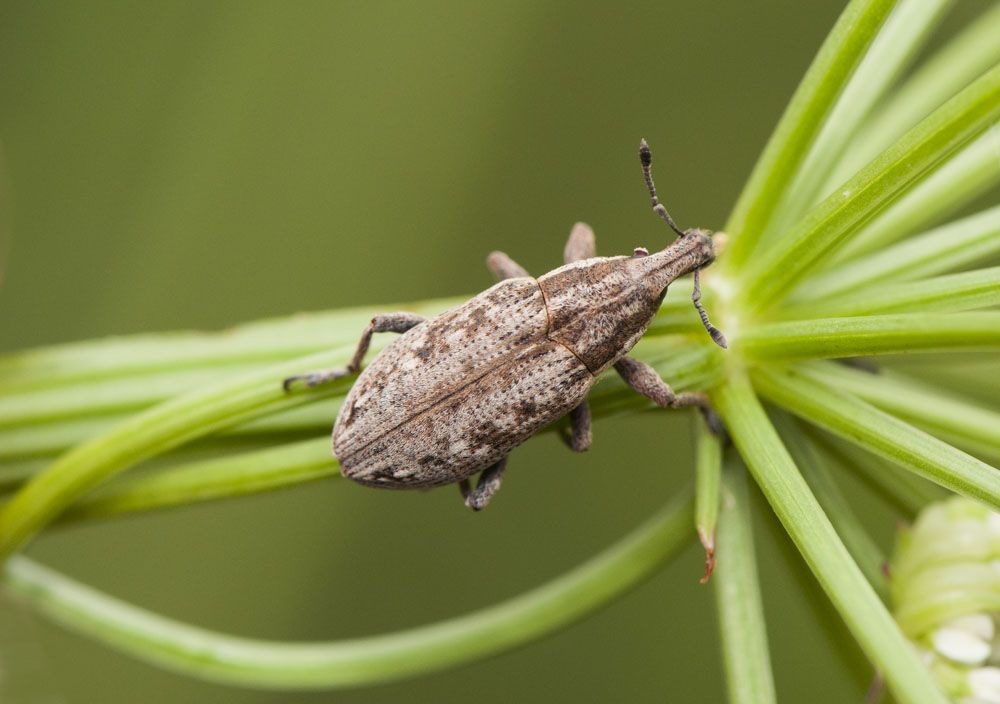
Vegetable Weevil – Lithroderes difficilis
Vegetable Weevil (Lithroderes difficilis)
Common Name: Vegetable Weevil
Latin Name: Lithroderes difficilis
Appearance:
- Adult vegetable weevils have a drab gray-brown hue and are 6-8 mm (approximately 0.25-0.3 inch) in length.
- Adults have thick hairs and dense scales on their bodies, giving them a bristly look.
- On the wings, they frequently feature a series of black diagonal patterns framing a lighter colored V-shape; however these markings may fade with maturity.
- The antennae are elbowed, and the front of the head has a short, robust snout.
